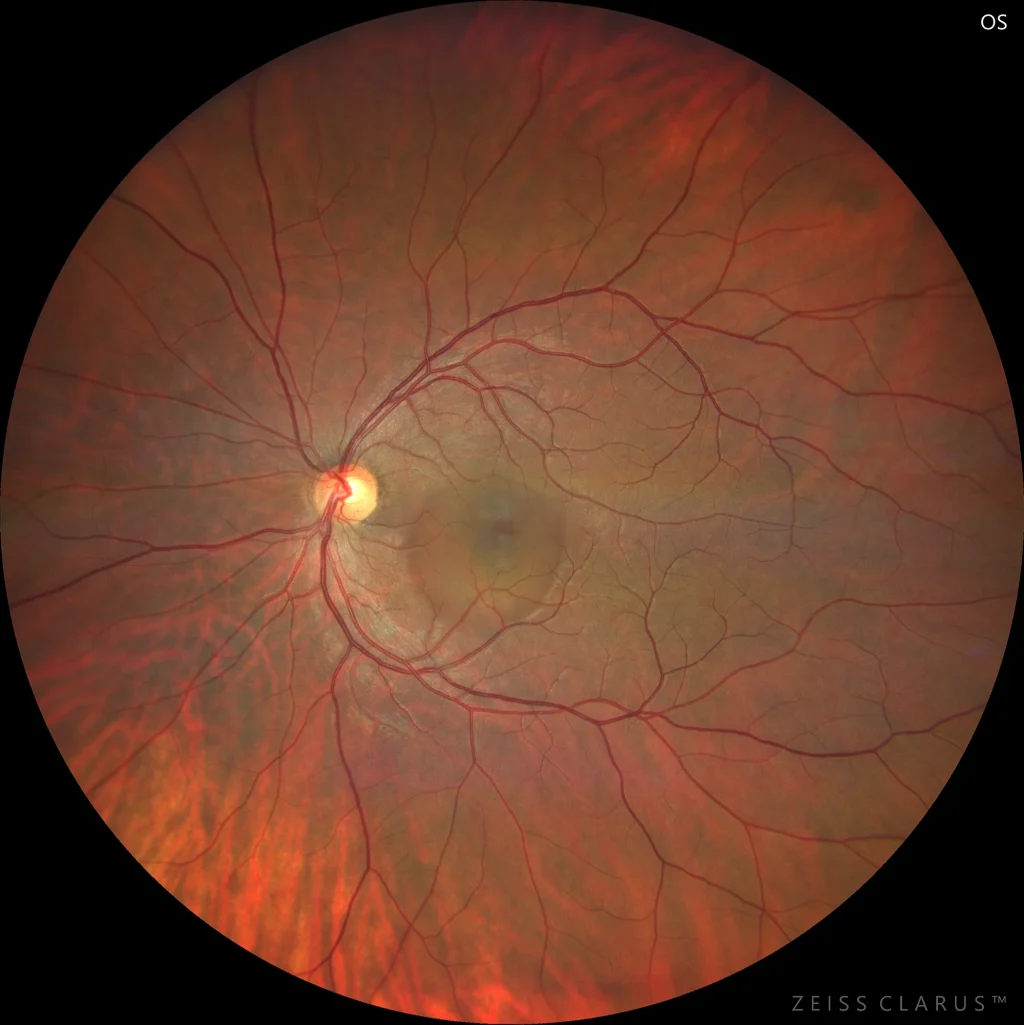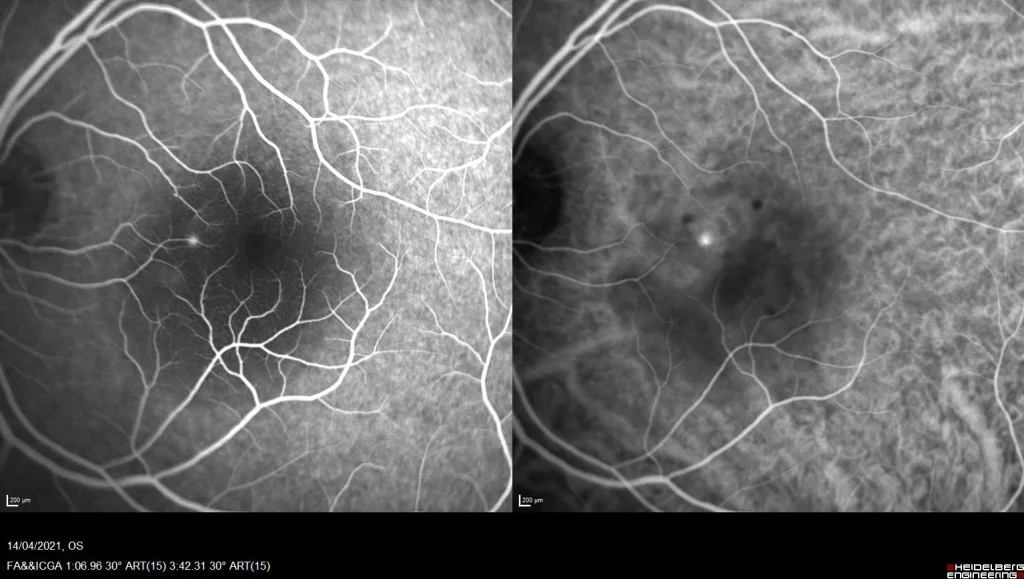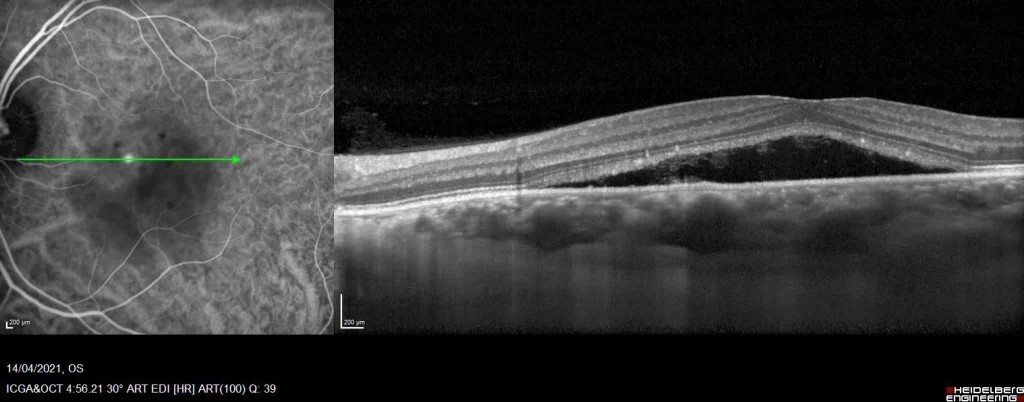Acute central serous chorioretinopathy
Color retinography showing a retina with little tessellation in the posterior pole, and a transparent blister of subretinal fluid at the macular level.
Fluorescein angiography shows normal vascular architecture. Characteristic of this pathology is a leakage point of the nasal dye to the macula with inkblot staining.
Indocyanine green shows a certain hypocyanescence probably secondary to compression of the pachychoroid vessels. The same leak point that we saw in fluorescein is observed. Remember that the leak point is not always observed in indocyanine, it depends on the size of the leak point. Finally, we should highlight the hypocyanescent spaces secondary to RPE detachments. OCT shows a neurosensory detachment of the retina. We highlight an elongation of the photoreceptors; towards the nasal side of the fovea, hyperreflective content is seen in the subretinal space, a certain excavation on the roof of the elongation of the photoreceptors. And coinciding with the leak point, we detect the presence of a large choroidal vessel compressing the choriocapillaris.
Description
Acute central serous chorioretinopathy. Acute central serous chorioretinopathy (CSCR) is an ocular pathology characterized by the accumulation of serous fluid between the retinal pigment epithelium (RPE) and the neurosensory retina, leading to serous detachment of the macula. This disorder predominantly occurs in young and middle-aged men and is associated with risk factors such as stress, corticosteroid use, and a type A personality profile. The etiology of CSCR is not fully understood, but choroidal hyperpermeability is thought to play a crucial role, facilitated by blood-retinal barrier dysfunction. Patients typically present with blurred vision, metamorphopsia, and micropsia. Diagnosis is confirmed by imaging techniques such as optical coherence tomography (OCT) and fluorescein angiography, which show serous detachment and subretinal fluid leakage. Although CSCR may resolve spontaneously in many cases, treatment may include laser photocoagulation or photodynamic therapy (PDT), or subthreshold laser for chronic or recurrent cases.



